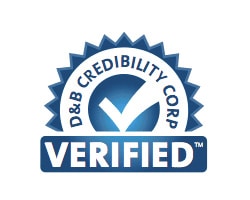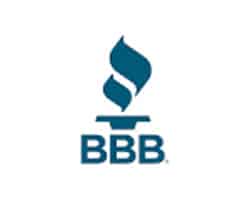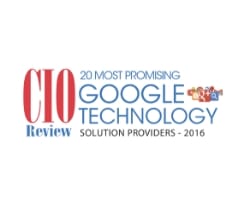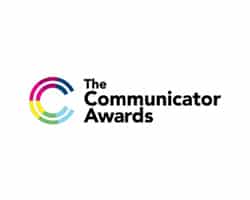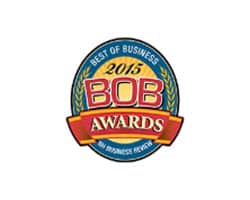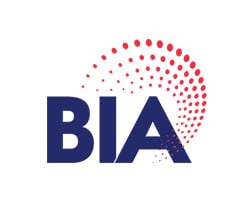It’s a new year – marketing professionals face a unique challenge: staying relevant in a marketplace that evolves at breakneck speed. As 2025 approaches, the need to rethink typical strategies and adopt bold, innovative approaches has never been more pressing. The key to success lies in embracing future-forward marketing practices, designed not only to meet but to exceed the expectations of increasingly discerning customers.
The Imperative to Embrace Change
The marketing playbook is being rewritten. To stand out in a saturated market, marketers must discard outdated practices and boldly venture into uncharted territories. Thinking differently isn’t just a competitive advantage; it’s a necessity. By adopting a mindset that welcomes creativity, innovation, and agility, brands can craft memorable campaigns that resonate deeply with their target audiences. This proactive approach is critical to navigating the complexities of tomorrow’s market.
The Marketing Playbook is Being Rewritten – Here’s How to Stay Ahead
The marketing landscape is shifting at an unprecedented pace, driven by rapid technological advancements, shifting consumer expectations, and cultural transformation. Traditional tactics, once the backbone of marketing success, are losing their effectiveness in a world where audiences are bombarded with content from every direction. To truly stand out in 2025 and beyond, marketers must abandon formulaic approaches and embrace bold, unorthodox strategies that spark curiosity and emotional connection.
Why the Old Playbook No Longer Works
Marketing strategies that once thrived—such as mass email blasts, generic social media posts, and rigid campaign timelines—are yielding diminishing returns. Consumers are more discerning, digitally savvy, and quick to disengage from messaging that feels impersonal or outdated. According to a 2024 McKinsey study, 71% of consumers expect personalized interactions, and 76% express frustration when they don’t receive them.
In this environment, cookie-cutter campaigns that prioritize volume over value are destined to fail. Instead, brands that thrive will be those willing to venture into uncharted territory—where risk meets reward, and creativity fuels connection.
Bold Moves from Industry Leaders
Let’s take a look at how forward-thinking brands are rewriting the rules and captivating audiences in unexpected ways:
1. Nike – Blurring the Lines Between Digital and Physical
Nike’s recent “.SWOOSH” initiative reimagines community engagement by blending the digital and physical worlds. This Web3 platform allows users to co-create virtual sneakers, which can later be used in video games or redeemed for physical versions. By integrating NFTs and immersive experiences, Nike taps into the metaverse while fostering a community-driven approach to brand building.
Key Takeaway: Brands that experiment with new technologies, such as augmented reality (AR) or virtual reality (VR), can create unique and memorable experiences that resonate deeply with tech-savvy audiences.
2. Patagonia – Activism as a Brand Strategy
Patagonia has consistently positioned itself as more than just an outdoor apparel company—it’s a climate action leader. By pledging 1% of sales to environmental causes and launching campaigns like “Don’t Buy This Jacket,” Patagonia defies conventional sales tactics in favor of purpose-driven messaging. This approach not only differentiates Patagonia from competitors but also strengthens brand loyalty among eco-conscious consumers.
Key Takeaway: Marketers can create powerful brand connections by aligning with causes that reflect their audience’s values, turning customers into passionate brand advocates.
3. Wendy’s – Engaging Through Unfiltered Humor
Wendy’s social media team has redefined brand voice by using humor, sarcasm, and direct engagement with competitors. Through witty Twitter roasts and memes, Wendy’s has cultivated a unique personality that thrives on viral content.
Key Takeaway: This bold, unapologetic approach has made Wendy’s a standout example of how brands can build personality-driven campaigns that break through the noise.
Embracing Agility and Experimentation
Thinking differently doesn’t mean abandoning strategy—it means embracing agility. In 2025, marketers must continuously test, learn, and iterate. Brands that adopt a “fail fast, learn faster” mentality will gain an edge by refining campaigns in real-time based on data and customer feedback.
Case in Point: Coca-Cola recently piloted AI-driven dynamic ads that adapt to real-time weather conditions. When temperatures rise, their digital billboards shift to display ice-cold beverages. This responsiveness creates hyper-relevant experiences that drive engagement and sales.
The Path Forward: Thriving in a World of Constant Disruption
In 2025, the brands that rise to the top will be those that see disruption as fertile ground for growth rather than a roadblock to success. Rapid shifts in technology, consumer behavior, and market dynamics are inevitable—but within this flux lies immense opportunity. The most successful marketers will embrace these shifts with a mindset rooted in adaptability, innovation, and courage.
Breaking the mold isn’t just about standing out; it’s about redefining what’s possible. As the boundaries between industries blur and competition intensifies, marketing teams must push beyond conventional ideas to craft experiences that leave lasting impressions.
The Ingredients for Future-Proof Marketing
1. Lean into Emerging Technologies
The integration of AI, machine learning, and automation is no longer a luxury—it’s the cornerstone of marketing transformation. From predictive analytics that anticipate customer needs to AI-generated content that dynamically adapts to user behavior, technology enables hyper-personalization at scale.
Example: Sephora leverages AI to power its “Virtual Artist” tool, allowing customers to try on makeup through AR. This immersive experience not only drives engagement but also boosts conversion rates by reducing uncertainty.
Your Opportunity: Explore AI tools that can automate and enhance your marketing funnel, delivering personalized touchpoints across the customer journey.
2. Champion Social Good and Authenticity
Today’s consumers aren’t just buying products; they’re investing in brands that reflect their values. Purpose-driven brands that stand for social, environmental, and ethical issues will continue to resonate deeply with audiences in 2025.
Example: Unilever’s “Sustainable Living” brands, including Dove and Ben & Jerry’s, outperform other product lines by focusing on sustainability and activism.
Your Opportunity: Find authentic ways to weave social responsibility into your brand narrative—whether through ethical sourcing, community initiatives, or transparent sustainability goals.
3. Design Immersive Brand Experiences
Consumers crave experiences, not just transactions. Immersive marketing—whether through virtual experiences, experiential events, or interactive storytelling—creates deeper emotional connections that drive long-term loyalty.
Example: Red Bull’s sponsorship of extreme sports events transforms its brand from a beverage into an adrenaline-fueled lifestyle.
Your Opportunity: Think about how your brand can craft experiences that go beyond products—events, interactive content, and immersive campaigns that pull customers into your world.
Building a Culture of Continuous Innovation
A future-proof marketing strategy isn’t a one-off initiative; it’s a mindset that permeates the entire organization. Cultivating a culture that values risk-taking, experimentation, and learning from failure will empower your team to consistently stay ahead of the curve.
1. Encourage Cross-Functional Collaboration
Break down silos by fostering collaboration between marketing, product development, data science, and customer service teams. This creates a 360-degree view of the customer, enabling more cohesive and innovative campaigns.
2. Test, Measure, Iterate
Adopt agile marketing principles. Launch smaller campaigns, gather feedback, analyze performance, and iterate quickly. This not only minimizes risk but also allows for constant optimization based on real-time data.
3. Empower Creative Thinking
Invest in training, workshops, and brainstorming sessions that inspire creativity within your marketing teams. Sometimes, the most groundbreaking ideas emerge when teams are encouraged to think beyond their immediate responsibilities.
The Call to Action: Act Boldly, Think Differently
The future belongs to the risk-takers, innovators, and disruptors. As you navigate the evolving landscape of 2025, remember that the most memorable brands aren’t the ones that play it safe—they’re the ones that dare to rewrite the rules.
So, what bold step will you take next? Will you pioneer new technology, champion a cause, or design experiences that captivate and inspire?
The future of marketing is being written now. Your challenge is to think differently, act boldly, and lead the charge.
The Role of Data in Driving Innovation
Gone are the days when marketing was driven by instinct alone. In 2025, data reigns supreme. A data-driven strategy empowers marketers to understand customer behavior with unparalleled precision. Insights gleaned from analytics reveal not only what customers want but also when, how, and why they want it. This granular understanding enables hyper-targeted campaigns that speak directly to individual preferences, transforming marketing from a broadcast medium to a personalized conversation.
Take, for example, the power of predictive analytics. By analyzing historical data, marketers can anticipate customer needs before they arise, delivering solutions that feel almost clairvoyant. This kind of personalization fosters trust and positions brands as indispensable partners in their customers’ lives.
Personalization: The Key to Deeper Connections
Generic marketing is dead. In 2025, customers expect brands to understand their unique needs and cater to them with precision. Personalization is no longer optional—it’s the price of admission. From dynamic email content to tailored social media ads, marketing efforts that prioritize individual preferences create deeper emotional connections with customers.
Consider brands like Netflix and Spotify, which excel at personalizing experiences. Their algorithms curate recommendations based on user behavior, making every interaction feel uniquely tailored. This level of personalization doesn’t just engage customers; it builds loyalty, turning casual users into passionate advocates.
Real-Time Metrics and Agile Adjustments
Innovation doesn’t stop at campaign creation—it extends to execution and evaluation. In 2025, marketing success will hinge on the ability to monitor performance in real-time. Tools like AI-powered dashboards and advanced analytics platforms enable marketers to identify what’s working—and what isn’t—at the click of a button.
With these insights, companies can pivot strategies instantly, ensuring that campaigns remain relevant and impactful. This agile approach transforms marketing from a static process into a dynamic, responsive effort that evolves alongside consumer behavior.
Collaborative Creativity: Leveraging Partnerships
No marketer is an island. To truly excel, brands must harness the power of collaboration. Partnering with creative agencies, influencers, and tech innovators brings fresh perspectives and expertise to the table. These partnerships enable brands to push boundaries and deliver campaigns that captivate audiences in new and unexpected ways.
Take Coca-Cola’s partnerships with artists and musicians to create interactive campaigns. These collaborations not only amplify creativity but also expand the brand’s reach by engaging diverse communities.
Thinking Differently: The Way Forward
As the marketing landscape continues to shift, one thing is clear: standing still is not an option. The marketers who succeed in 2025 will be those who embrace change, prioritize personalization, and leverage data-driven insights to inform their strategies. By fostering creativity and building meaningful connections with customers, brands can secure their place in an ever-changing market.
The future of marketing is not about keeping up; it’s about leading the charge. Are you ready to think differently?
Linda Fanaras is the founder and CEO of Millennium Agency. She is an expert in brand strategy, marketing, and public relations, with a focus on helping businesses and organizations develop effective communication strategies. Linda is known for her leadership in the marketing industry and her ability to create impactful strategies for B2B companies.














